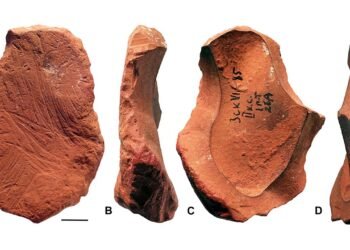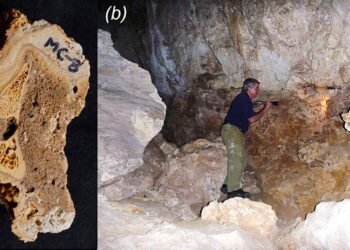A team of archaeologists from the San Luis Gonzaga National University of Ica (Unica) has uncovered 29 geoglyphs in the Ica region of Southern Peru. The geoglyphs, found in the districts of El Ingenio and Changuillo, depict intricate feline and anthropomorphic figures.

Dating from 300 BCE to CE 100, the geoglyphs belong to the late Paracas period and the early Nasca period. The Paracas culture, which emerged around 800 BCE, is considered a precursor to the Nasca culture, known for its famous geoglyphs representing various living creatures on the desert terrain.
Using advanced technology such as drones, the research team, led by archaeologist and Unica School of Archaeology teacher Omar Bendezú De la Cruz, conducted a four-month-long project authorized by the Ministry of Culture. The geoglyphs were identified in the El Ingenio and Changuillo districts, showcasing figures with varying measurements and orientations.
In El Ingenio, the team discovered 10 feline figures measuring up to 17 meters long by 12 meters tall, and in Changuillo, 8 geoglyphs depicting feline figures measuring up to an impressive 37 meters long by 13 meters tall. The remaining geoglyphs featured anthropomorphic figures, with 10 found in El Ingenio and 1 in Changuillo.
 Bendezú De la Cruz emphasized the significance of the discovery, stating, “The discovery of these new geoglyphs in El Ingenio and Changuillo in the province of Nazca is an important discovery for Peruvian archaeology.” He further highlighted the orientation of the geoglyphs, noting that they faced south towards the Nasca Lines, suggesting a special significance or religious connection to the feline figures.
Bendezú De la Cruz emphasized the significance of the discovery, stating, “The discovery of these new geoglyphs in El Ingenio and Changuillo in the province of Nazca is an important discovery for Peruvian archaeology.” He further highlighted the orientation of the geoglyphs, noting that they faced south towards the Nasca Lines, suggesting a special significance or religious connection to the feline figures.
The Paracas culture’s reverence for felines as water deities and their association with fertility is evident in the newfound geoglyphs. Feline representations are recurring themes in Paracas ceramics and textiles.
This discovery comes 39 years after the UNESCO declaration recognizing the Lines and Geoglyphs of Nasca and Palca as Cultural Heritage of Humanity. Bendezú De la Cruz expressed the need for support from private companies, local authorities, and UNICA to continue archaeological research in the Ica region.
The research team’s use of drones and specialized software allows for a detailed analysis of the geoglyphs’ shapes and sizes. This discovery reinforces the Ica region’s status as a treasure trove of ancient astronomical and religious expressions.























